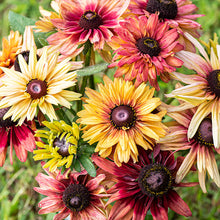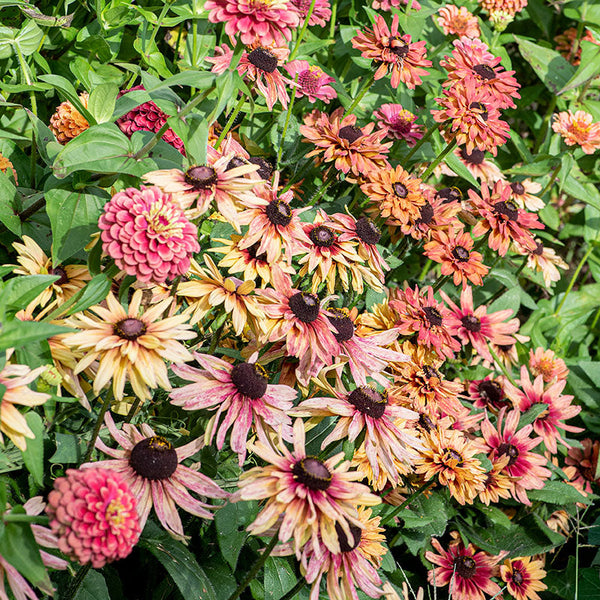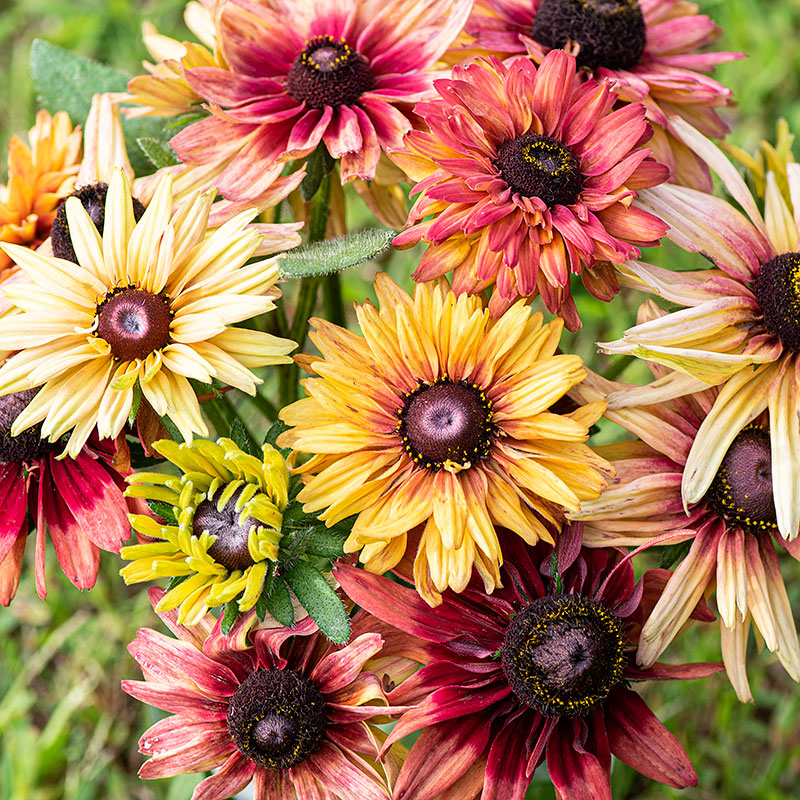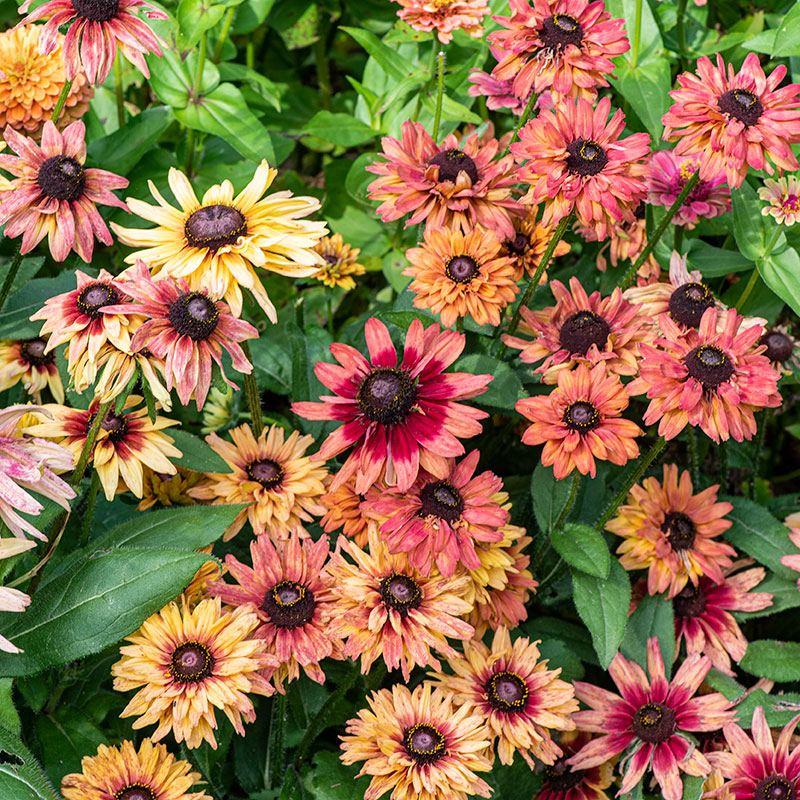SOWING INSTRUCTIONS
Depth:
Surface sow and firm lightly; requires light to germinate.
Seed To Bloom:
12-16 weeks
Starting Indoors:
Recommended. Sow in containers 8-10 weeks before last frost; cover with humidity dome to retain moisture while seeds germinate. Keep at 65-75°F.
Starting Outdoors:
Sow directly in zones 8+ after all danger of frost has passed.
WHEN TO SET OUTSIDE
After all danger of frost has passed.
PLACEMENT & CULTIVATION
Rudbeckia or gloriosa daisy varieties offer sizzling bright oranges and golds, plus subtle pastel color schemes and even deep red and chocolate hues. A must for wildflower gardens combined with grasses and coneflowers and valuable in the cutting garden and border for mid-summer through fall bloom. Deadhead for more flowers and mulch to conserve soil moisture during high summer. May overwinter in zones 5-8, but most often grown as an annual. Self-sows.
Watering Details:
1" a week. Tolerates some drought once established, but blooms better with regular water.
Fertilizer:
Prior to planting, mix in about 2" of compost or organic granular fertilizer.
Diseases & Pests:
Aphids and slugs may be a minor problem. Prevent foliar diseases by spacing properly and planting in locations with good air circulation.
When to Cut for Bouquets:
Harvest when flowers are fully open.












































